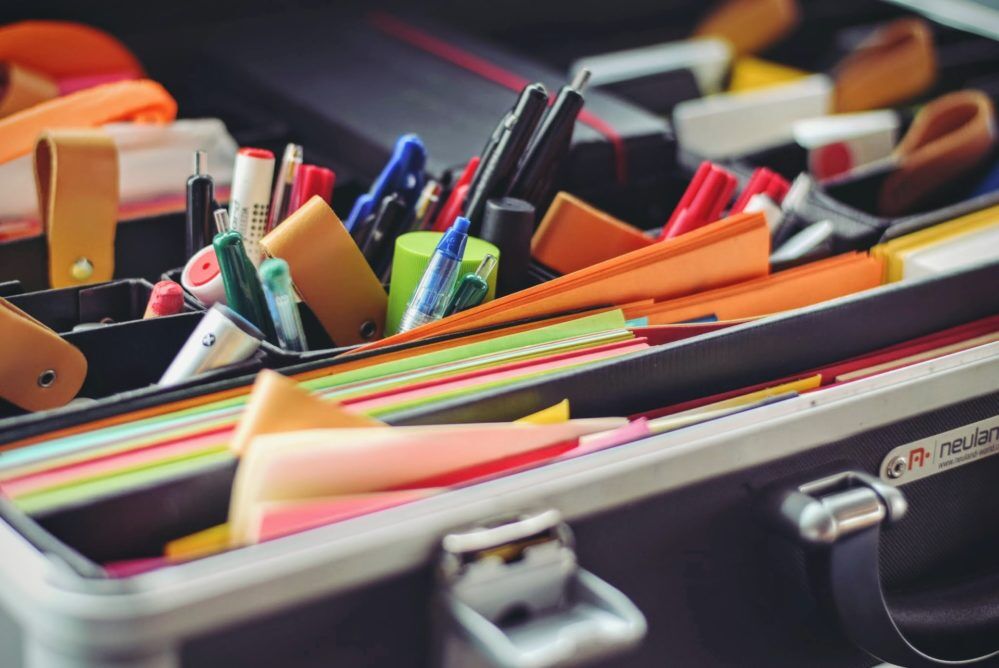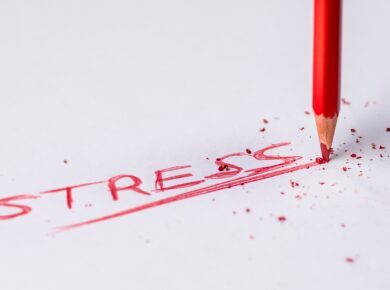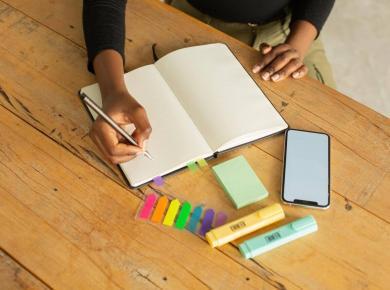Different people have different learning styles that refer to how they prefer to have information presented to them. If you understand things better once you’ve written them down, find diagrams and graphs hard to follow, and enjoy listing items — you are probably a read and write learner. Read this article to learn more about this type of learner, its characteristics, as well as strategies and tips they find helpful.
What Is Reading And Writing Learning Style?
Reading and writing is one of the four learning styles of the VARK model of learning, which consists of visual, auditory, reading and writing, and kinesthetic learning. Sometimes referred to as the second visual style, reading and writing is a type of learning during which people prefer to read and write in order to learn more effectively. These learners are known as read and write learners and usually learn best by reading and writing the information down. They are the people who always add notes to pictures, choose a hardcover book over an audiobook, and prefer using closed captions while watching videos. Their learning process consists of a combination between reading and writing, by reading to understand and note-taking to learn.
Reading to understand
The read and write learners rely on reading to understand and learn. They may have problems grasping the information presented to them by other means such as lectures or pictures, as they are more comfortable with written words. Read and write learners typically choose textbooks, articles, handouts, and notes as their primary source of learning information. They also enjoy learning from reference materials like dictionaries and encyclopedias.
Note-taking for memory retention and learning
After reading a text, read and write learners prefer to reduce and rephrase it to retain information further. They use note-taking as a powerful tool for learning. These learners are usually successful in a traditional classroom environment, where they tend to take notes in most classes and benefit from reading and re-reading them. Writing the information down, rewriting, and reading it is what helps them better understand it.
Characteristics Of Read And Write Learners
Did you know that although reading and writing learners are usually the ‘good students’ in a class, they can find participating in discussions challenging? Since they can articulate themselves better when writing, they prefer to write their thoughts down before sharing them with the class. This way, they can process their thoughts and become more prepared and less stressed to share out loud. You can find more read and write learner characteristics in the list below.
- Learn best by reading and taking notes
- Like reading out-loud
- Use dictionaries and other source materials as reference
- Learn by re-reading their notes
- Tend to remember information that they read or write down
- Can become great writers
- Prefer making organized Powerpoint Presentations for presenting different projects
- Prefer reading by themselves rather than have someone read to them to retain information
- Excel at multiple-choice and essay tests
- Tend to be good at grammar since they read habitually and frequently
- Prefer writing essays to oral presentations
- Like researching
- Express themselves better when writing rather than when talking
- Tend to write detailed notes
- Like words that have interesting/unique meanings and backgrounds
- Prefer written feedback for their work or performance
- Enjoy using lists and ordering things into categories
- Enjoy reading in their free time
Different Reading And Writing Techniques of Learning
It goes without saying that the notes you take need to be concise, clear, and accurate. Since read and write learners mainly rely on notes for the process of learning, in this part, we have compiled different strategies that can be useful for such learners. Read on to find out more about each one of them.
Cornell’s Notes
While there are many ways to take notes, Cornell’s notes is an efficient note-taking technique suggested for the reading and writing learning style. This method helps read and write learners better understand information and facilitates reviewing notes.
To organize your notes, you need to divide the page into four sections:
- One small area at the top of the page where you can put your title and date.
- Two main column areas at the center, one to write your notes on, and the other for keywords, comments, or questions.
- The fourth (last) part is the area at the bottom that you shall use to write a short summary of that page after reviewing your notes.
This method encourages you to reflect on your notes by summarizing them, thus helping you understand and remember information better.
Mind-mapping
Mind mapping is another effective way to organize information in order to understand it better. You can use it to take notes while listening to a lecture, organize your ideas and information, review learning when preparing for an exam, and more. You start by putting the main idea in the center of the page ( the page should be in landscape orientation), adding arrows, speech bubbles, branches, and colors to further elaborate on the topic.
It would be best if you tried to draw quickly and clearly, with the intention to revisit your drawing to revise and better understand that information. Use different colors to classify and symbolize different things. Always try to leave some space on your page so that you can add to your mind mapping diagram.
✅ Request information on BAU's programs TODAY!
Highlighting and annotating
Many students tend to highlight or underline the main parts of a text and take notes in the page margins. This method of learning and note-taking enhances the understanding of a text. After reading it, you need to go back to the text and revise the main points of each paragraph, highlighting them and adding comments, summaries, or questions as annotations in the page margins on the side.
The highlighting and annotating technique helps you engage with the text by noting observations, words to look up, questions, or adding further clarifications and context to certain parts. You can highlight different parts in different colors but be careful not to overdo it as it can distract you when revising information.
Using symbols and abbreviations
In order to avoid writing down everything word for word when you take notes, it is recommended that you use abbreviations and symbols. You can abbreviate by leaving out most articles and conjunctions, shorten words by leaving out vowels or other letters, and use abbreviations and symbols for commonly used words and phrases. You may even come up with a few of your own and personalize them. Through abbreviation and symbol use, shortening words and sentences allow you to write down as much as possible as quickly as possible.
Tips For Read And Write Learners
As we already established, people who use the read and write learning style primarily use reading and note-taking in order to learn. In addition to the strategies mentioned above for taking notes more effectively, below we present some general tips to help read and write learners retain information more easily.
- Rewrite information into your own words
- Translate charts, diagrams, graphs into words (or compose short explanations for them)
- Write down main or key concepts and ideas
- Write down instructions for every step of any process or procedure
- Study alone in quiet areas to avoid distractions
- Keeps lots of notes
- Keep your notes organized with subheadings, bullet points, and lists
- Use different colored pens and highlighters
- Highlight keywords as you write
- Make sure you include many details
- Re-read your notes
- Write notes to yourself in the margins
- Rewrite your notes after class
- Print out your notes for later review
- Compare your notes with someone else’s
- Post notes cards in visible places
- Write exam answers
- Practice with multiple-choice questions
- Combine your handouts with your notes
Finding your learning style is crucial to making learning easier, more accessible, and more effective. If you could relate to what you read so far and are a read and write learner, we hope you use the strategies and tips we provided for a better learning experience. If you think your learning style may be a combination of more than one method, you can check our articles on the three other types of learning and find out what suits you best.













